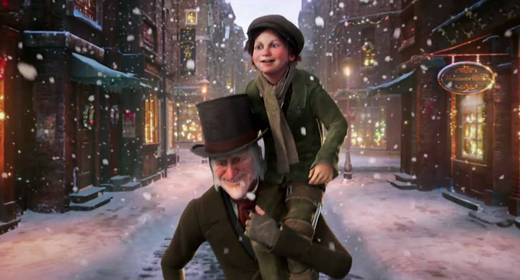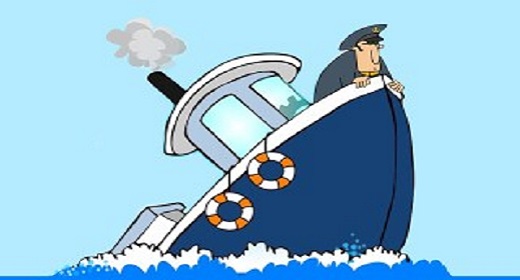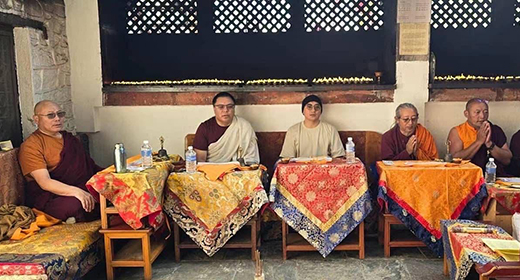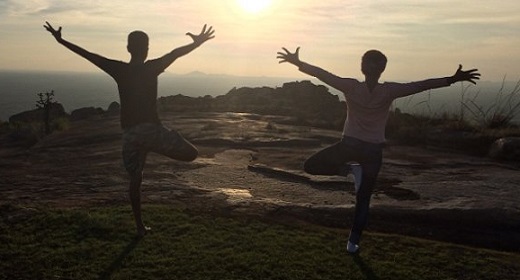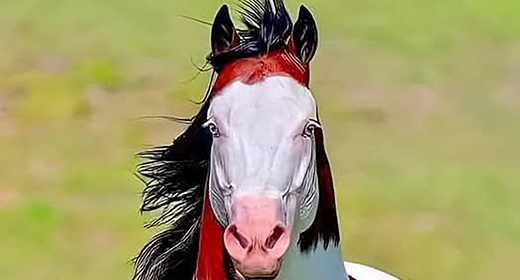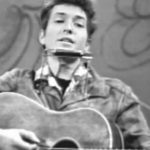Myths provide guidance for difficult times. They can offer encouragement as we struggle to survive horrendous ordeals. Overview: Dr. Young was the founding curator of the Joseph Campbell Archives and Library. 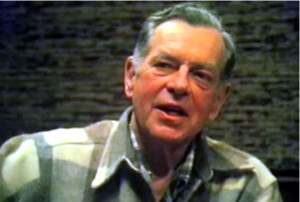 In this interview he presents both professional and personal observations from his experiences and time spent with Joseph Campbell. He states, “Assembling the archive was an intense sojourn inside Joseph Campbell’s mind as I struggled to understand how he worked with such a vast range of ideas.” Dr. Young discusses the heroic journey as well as other types of myths and explains how Campbell interpreted myths as operating on four levels simultaneously: the metaphysical (spiritual), cosmological, sociological, and psychological. Also, connections between Campbell and Carl Jung are discussed. (3575 words).
In this interview he presents both professional and personal observations from his experiences and time spent with Joseph Campbell. He states, “Assembling the archive was an intense sojourn inside Joseph Campbell’s mind as I struggled to understand how he worked with such a vast range of ideas.” Dr. Young discusses the heroic journey as well as other types of myths and explains how Campbell interpreted myths as operating on four levels simultaneously: the metaphysical (spiritual), cosmological, sociological, and psychological. Also, connections between Campbell and Carl Jung are discussed. (3575 words).
What professional impressions and observations stand out to you from your association and interactions with Joseph Campbell?
Campbell’s studies of ancient teachings incorporate psychological themes of considerable clinical value. Campbell was well known for detecting the redundancy of myth, that is, how variations of the same plot are found repeatedly throughout the world and down through history.
What stands out for me is that the journeys that Campbell describes include dreadful ordeals and trials. I find that in clinical work, and in dealing with my own issues, it is useful to study mythic tales for hope. Myths provide guidance for difficult times. They can offer encouragement as we struggle to survive horrendous ordeals. The protagonists did get through those challenges and their accounts provide hints as to what to do to handle adversity.
What are your personal glimpses and remembrances of Campbell?
Joseph Campbell was as engaging in person as he was on television. He was astoundingly knowledgeable. As I assisted him in seminars, I would have the opportunity to hear the same material presented a number of times and noticed in answering a question how he could bring in vast references from dozens of mythological systems from all periods in history and from all over the world. I could see the depth of his scholarship.
Campbell read, on average, six hours a day for over 65 years. By the time he gave the television interviews with Bill Moyers, it seemed as though he knew everything. All those decades of extensive reading gave him a sweeping grasp of human experience.
Joe was an enjoyable person to be around. He had many great stories and jokes from his Irish background, and liked to have a glass of single-malt scotch in the evening. Some of the retreat centers where he would present weeklong seminars featured a vegetarian menu. He usually ate meat and potatoes. He would joke that a vegetarian is just a person who can’t hear a carrot scream.
How did you come to know Joseph Campbell?
I met Campbell through a colleague. Stephen Aizenstat knew of my interest in using mythic perspectives in psychotherapy. He had a small institute and was hosting Joseph Campbell for retreats in Santa Barbara. I ended up assisting Campbell at seminars for several years. This allowed me to spend considerable time with him. The institute grew into the graduate program at Pacifica, which is unique in the way it combines mythology and psychology.
After I started teaching at Pacifica, I was honored to be named founding curator for the Joseph Campbell Archives. This involved extensive work at Campbell’s apartment in New York City and his home in Honolulu. His many decades of scholarship were reflected in the many manuscripts and heavily noted books. Assembling the archive was an intense sojourn inside Joseph Campbell’s mind as I struggled to understand how he worked with such a vast range of ideas.
Is it accurate to say that there are a variety of types of myths, and Campbell focused upon hero myths?
Yes, particularly early in his career in his best-selling book, The Hero with a Thousand Faces. It tells of the mono-myth, the shared tale that is told all over the world in many versions. It is the universal adventure we all know – the journey through a lifetime. This is not the only kind of myth, but is the best known. Of course, in his long career and vast scholarship, Campbell dealt with all types of myths. His scholarship dealt with forms other than the heroic, such as tragic, comic, and ironic.
Would you give an overview of each of the types of myths?
This draws on the work of Northrop Frye who was a prominent Canadian theorist. I believe that those who find Joseph Campbell’s work intriguing would appreciate Frye’s ideas. He associated types of myths with the seasons.
Spring is a hopeful season. A comedy is an appropriate literary form. In comedy harmony is appreciated though there may be a little confusion or mistaken identity. A comedic myth or story rarely contains life threatening themes. By the end of the tale everything has been worked out and there is a happy ending. Order is restored and there is a celebration of stability and connection. Those of us in the North American culture like comedy myths and stories. We like happy endings.
The quest or the hero’s journey is associated with summer. There is more at stake and the extent of what is learned is more radical. There will be a journey of experience if not an actual journey geographically. In the end the hero has survived and the cause has prevailed. Again, there is a happy ending and the quest is a popular story form.
Autumn is a particularly beautiful season. Frye sees tragedy as the appropriate form for autumn. In tragedy death wins; there is loss. The beauty is that meaning not only prevails but it triumphs. In the course of experiencing losses we often discover that which is important. When a relationship is broken by death we discover how important love is. Even though there is great sadness in tragedy, it is very fulfilling on the level of meaning. It is deeply rewarding on the level of meaning. The Greeks thought that tragic stories were particularly important to reflect upon. When tragic plays were presented they believed that it was especially important to attend the theater. Tragedy humbles and deepens us and reminds us of what being human means. Facing tragedy teaches us what to value.
Irony is associated with winter. In tragedy death wins but meaning survives; in irony meaning dies and chaos prevails. Irony is a celebration of anarchy. Black humor is ironic and satiric. Beckett, Cervantes, and Lewis Carroll are marvelous writers of irony who confuse but fascinate. Irony is entertaining and we can’t resist the humor because it speaks a certain truth. We need irony because there are times in our lives that are chaotic and confusing. Chaotic times are not particularly good times to discover meaning in life because it is elusive.
Heroes’ journeys and quest stories are important but they are not the only stories or types of myth. There are others that are important as well.
From the Bill Moyer’s series with Joseph Campbell the refrain “follow your bliss” stood out to me. What did he mean by “bliss” and “following your bliss”?
Bliss is a poetic turn of phrase. It is open to a wide range of meanings and personal implications. On the obvious level, bliss is a sense of delight or fascination. It is the path of deepest engagement. There is a sense of childhood play involved in engaging in what appeals to us. Even though one may be caught up in enormously difficult work, there remains a joyful thread. A bystander could look at the person and say, “You are doing incredibly hard work” while the person caught up in his bliss might not view it as difficult and say, “It’s not that hard. I am enjoying my work.” There is a mystical thread to following our bliss even though on an ordinary level it is just what appeals to us. There is probably a spiritual dimension behind it.
On a personal level something is calling to us which represents a deeply meaningful engagement. Following your bliss has a strong sense of fulfilling one’s purpose implied in it. Although not everyone is philosophically minded and they would speak of it in different terms, if you look closely you will see that there is an enormous satisfaction associated with following your bliss.
It seems to me that Campbell’s work with mythology integrates spirituality and psychology. Would you comment upon that?
Campbell saw myths as operating on four levels simultaneously: the cosmological; metaphysical (the spiritual dimension); sociological; and psychological.
He sees these four levels operating simultaneously throughout all the stories. We can see clearly how this describes the integration of spiritual life with our psychological processes.
William James saw great overlap between spirituality and psychology. He thought that uses of differing language distracts from the considerable common ground. In theological discussion we refer to the spirit or soul whereas in psychological discussion we speak of emotion, unconscious, and psyche. James thought the two were much the same. All these words refer to the mystery within each human we could simply call the inner life.
You mentioned that Campbell saw the myth as operating on the, cosmological; metaphysical, sociological; and psychological levels. Would you comment on each of these levels?
It was very important to Campbell to proceed in order. He always began with the metaphysical or spiritual level. Myths can open a sense of awe or a sense that behind the surface there is a transcendent mystery. This involves the religious aspect of mythology. One of Campbell’s favorite phrases was, “Myths allow us to enter into a holy picture.” It is as if life is taking place within a mystical radiance.
He lists the cosmological level of myth second. This deals with the creation myth and the image of the world. This is the focus of science and examines the shape of the universe in a way that there is still a sense of mystery to it. This should correspond to the actual experience and mentality of a culture. It is updated constantly.
The sociological level supports and validates the specific order of society. Ethics, laws, and social roles are reflected in this function. This is revised constantly and changes radically over time. This allows members of the group to be part of the whole.
The level of myth that Campbell was particularly interested in was the psychological. This deals with how myths help us live. It involves the pedagogical function. It carries the individual through various stages and crises of life from childhood dependency, to the responsibilities of maturity, to the reflective-ness of old-age, and finally to death. It helps people grasp the unfolding of life with integrity.
Are there certain components or elements that are found in all types of myths?
All myths are metaphors. Understanding metaphors is essential to understanding and interpreting myths. All myths work metaphorically and symbolically. They are rich in imagery. We not only learn from the obvious lessons but from the more subtle and more figurative dimensions. A myth is to be read visually as if it were a dream or movie. Then we must ponder the pictures to extract the metaphoric message. This fascinates some of us while others ask, “Why do you want to read those old stories? They are not that interesting. There are contemporary stories that are more amusing.” The richness of how the visual dimension works psychologically is the key to understanding the power of the myth. A picture is worth a thousand words.
A dream works similarly. There are not three talking points at the end of a dream that tell us why the dream is important. We must review the images and ponder how we felt emotionally as we experienced the dream and explore what the symbols may mean. If I had a dream about a subway, I might ask, “What is a subway?” A subway is located underground and a place where trains travel. Perhaps there is some movement in my unconscious. Perhaps the dream is communicating something about my taking a journey unconsciously. People who have problems making that leap from the picture to psychological implications miss the meaning and richness of the experience.
Carl Jung was very important to Joseph Campbell’s work. Of the psychological theorists that Campbell drew from, Jung was by far the most important. Jung’s theory of the inner life of the human being was visual. Jung’s view was that we process experiences by the flow of energies. This goes deeper than feeling or affect and deeper than thinking or the intellect. Experiences such as dreams are base in reality and are on going in the unconscious at all times. At night we have some access to the process but it goes on constantly. To understand our deepest qualities, motivations, and reactions we need to proceed past words, and ideas and reflect upon the imagination, the flow of images. Myth is a visually rich mirror to the mysteries of the interior experience.
You mentioned the connection between Joseph Campbell and Carl Jung. Frequently one sees references to Carl Jung in the works of Campbell. Would you speak about the connection and interaction between Jung and Campbell?
Though Jung’s contributions had a major impact upon Campbell, he was careful to insist that he was not a Jungian. He read very extensively in Freud and other psychologists as well. Campbell was a considerable psychological thinker in his own right. Part of the appeal of the way Campbell presents mythic materials is that he constantly points out personal applications. That is something not commonly found in older books on mythology, whether the work is popular or scholarly.
Joseph Campbell knew Carl Jung. One of Campbell’s mentors was a man named Heinrich Zimmer who was close to Jung. Campbell gathered and published some of Zimmer’s ideas posthumously. He engaged in a long correspondence with Jung and spent a memorable afternoon with Jung at his castle retreat in Bollingen on Lake Zurich.
Campbell also became involved in the Eranos Conferences. Jung had launched the series at Ascona in the south of Switzerland. These were annual conversations among philosophers, psychologists, theologians, historians, and other thinkers on archetypal themes. Campbell became a leader in that circle after Jung became older and withdrew from active participation. Campbell made notable presentations at the gatherings and edited six volumes of papers from the Eranos Conferences.
Campbell drew on many great theorists. His sense of the universality of mythic ideas came from Adolf Bastian, who noted how local folk ideas finally give way to deeper elementary ideas. These essential themes and images are similar to Jung’s descriptions of archetypes and the collective unconscious. So, even though Campbell used ideas from many sources other than Jung, he was a significant figure in Jungian circles. Again, I would emphasize that of the psychological theorists from whom Campbell drew, Jung was by far the most important.
In reading Campbell, I noticed that one of his points was that we should not search for meaning in life but rather should focus upon experiencing life. What did he mean?
The journey through the stages of life contains many lessons. One of them is that certainty is an illusory goal. Through humbling experiences, life seems to instruct us to be flexible and to loosen the demand for control and absolute answers. What Campbell was saying was that we need to get past the quest for defining the meaning of life in a few clear phrases. Final, ultimate answers to the big questions are ephemeral. His advice is similar to Rilke’s comment that we should live in the questions and perhaps someday we will grow into the answers. It is a more fluid approach.
Campbell advocates an engagement with life so intense that you would experience “the radiance of being alive.” This involves a level of connection physically, emotionally, and mentally that is so rich as to feel like oneness with the flow of life. The experience is so profound that it resolves the yearning. It is not something that can be translated into a creed or a code. It is a direct experience.
Is that related to the Eastern idea of enlightenment or other transcendent experiences?
It is very close to the language of enlightenment or what the Christian mystics in medieval Europe describe as ecstatic experience. In his college days at Columbia University, Joseph Campbell was a runner. At times, on the track, he felt at one with the universe. It is a physical sensation. The spiritual disciplines of the Eastern traditions– such as dietary regulation, chanting, and meditation–help get people to that level of engagement.
Is there any connection between “the radiance of being alive” and what Maslow called peak experiences?
Yes, but Maslow’s descriptions were usually set in a social life – career, family, and creativity. He didn’t seem to have a fascination with the monastic retreat. He was talking about a life involved with the city and with people. It is more of a Western or North American view of being in the swim.
Tell us about your work, speaking, seminars, and books.
Most of my articles are on using stories to understand the inner life. My two books are volumes in a series called SAGA – Best New Writings on Mythology. They are anthologies of the best-known writers in the area of psychological study of mythic tales. The books include contributions by Clarissa Pinkola Estes who wrote Women Who Run With the Wolves; Sam Keene who was close to Campbell, Jean Houston, Toni Morrison, Ursula LeGuin, and Alan Ginsberg. Also, they include leading figures in the archetypal study of psychology such as Thomas Moore, Jean Shinoda Bolen, James Hillman, and Marion Woodman. The guiding idea of the series is to give overviews of this rich area of study.
In addition, I am working on a separate book drawing personal insights from fairy tales, which is entirely my writing. My main professional activity is to give seminars on personal mythology. I speak at Jungian societies and Joseph Campbell Roundtable meetings. These are all around the U.S. and in other countries. Also, I do in-service trainings at hospitals and clinics on using mythology in psychotherapy. There are schedules of my presentations on the web at folkstory.com along with articles and links to additional resources. After 20 years I have closed my clinical practice in order to be able to travel extensively and do more seminars.
Would you be comfortable commenting on how your contact and interaction with Joseph Campbell influence your life?
Joseph Campbell changed my life. I had grown up in a strict fundamentalist religious family. I had moved away from that background at the time when I met him in 1981. My interest in the large questions was no longer in terms of the tradition presented in my childhood. In discussions with Joe, I was able to re-engage in the truly profound issues. It restored a sense of the sacred, which had been missing in my life for a number of years. I think that Campbell helped many people to reinvent the inner search and to discover what really matters. Not everyone is on the long quest, but for those who are seekers, Campbell gave a fresh breath to the way we can look for meaning and purpose.
He certainly took a broad range of material of depth and was able to share it with many of us who wouldn’t have been exposed otherwise.
He was very articulate and gifted in making profound material accessible. He was an effective storyteller, which is a form that can make complex matters more understandable. He was somewhat controversial partly because he made the ideas clear. There were critics of his work, within departments of folklore and mythology, who thought that he had overly simplified the material. I think that his contribution was astounding. I believe that when the history of our time is written that Joseph Campbell’s invitation to take another look at mythology will be seen as a momentous event.
In the history of ideas Joseph Campbell’s work is becoming more and more important. It has been about twenty years since the Bill Moyer’s interview with him was originally aired in 1987. His influence on religious thinking, literary studies, and psychological theory and treatment has been huge and his contributions have continued to ripple out. He is by far the most influential mythologist in modern history. When the intellectual history of the Twentieth Century is written the impact of Campbell’s thinking will be seen as enormous.



